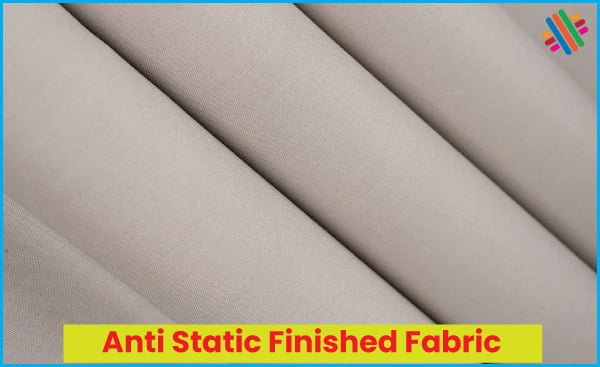Last updated on March 16th, 2024 at 10:33 pm
Definition of Textile Finishing
In textile manufacturing, finishing refers to the processes that convert the woven or knitted fabrics into a usable material and more specifically to any process performed after dyeing the yarn or fabric to improve the look, performance or “hand feel” of the finished textile product or clothing.
In another way we can define, “Textile finishing is the term for chemical and mechanical processes used on textiles after they have been made”.

Methods of Textile Finishing
But how is textile finishing done? Let’s look at a few common textile finishing methods.
Chemical Finishing Methods
Chemical finishing methods include bleaching and mercerizing. Bleaching is a process of whitening textiles through a chemical process that involves oxidation. Textiles may be bleached to remove unappealing natural color or variations in surface color, or as a step-in preparation for dyeing. Mercerizing adds strength and luster to cotton textiles by submitting them to an alkali solution. This process also allows them to better soak up dyes.
Mechanical Finishing Methods
Mechanical textile finishing methods include napping and shearing processes that create a soft surface much like velvet. They also make textiles warmer for the wearer. Think of your favorite fleece jacket or blanket. During this kind of treatment, the textile is subjected to rollers covered with many very short wires that raise the fibers from the surface.
Different types of Textile Finishing
There are many different types of textile finishing. We can’t cover them all, but let’s explore important categories and some of the most common processes.
Washing and Drying
Washing cleans the fabric and removes dirt that might remain following the manufacturing process. It can also involve other finishing processes like bleaching which removes color and whitens fabric and scouring which uses high temperature and detergents to remove dirt, grease, and wax from manufacturing. During these phases of textile finishing the fabric might also undergo special processes like mercerizing which is done to cotton. In mercerizing the cotton fabric is submerged in a sodium hydroxide solution for short periods and then rinsed. This process makes cotton fabric stronger, gives it a lustrous or shiny surface and improves its ability to take dyes and hold more vivid colors.
Stabilizing
Fabrics also need to be stabilized. These processes are done after washing. They tend to reduce shrinkage, settle condition and readjust surfaces that might have become stretched during manufacturing. Fabric stabilizing includes processes like calendering, which compacts fabric fibers by pressing them between two large, heated rollers. Several types of calendering using different rollers produce specific kinds of finishes.
Some methods might be used on specific kinds of textiles. Fulling is a process that uses heat, moisture and friction on wool fabrics to makes them smoother and more compact. It’s sort of like controlled shrinkage. Another process done specifically to wool is crabbing in which wool fabric is wound on rollers at high tension and subjected to hot or boiling baths. The process eliminates distortion and helps set the yarn fibers so they hold their shape.
Other Finishes
Another element of textile finishing involves applying chemical substances to fabrics in order to achieve certain results. These might make fabrics resistant to static or help them stay wrinkle-free. Substances can also be applied to make fabrics water repellent, flame retardant or anti-bacterial. Today there are an endless variety of very specialized finishing processes to achieve desired functional results.
Some Textile Finishing Machines
- Film coating finishing machine.
- Blade type finishing machine
- HMI Stenter textile machine.
- Good Insulation textile finishing machine.
Author of this Post
MR Noyon
Jhenaidah Textile Engineering College





Wow! You thoroughly covered all important points with this post. I want to read more by you. Do you write for any more blogs?